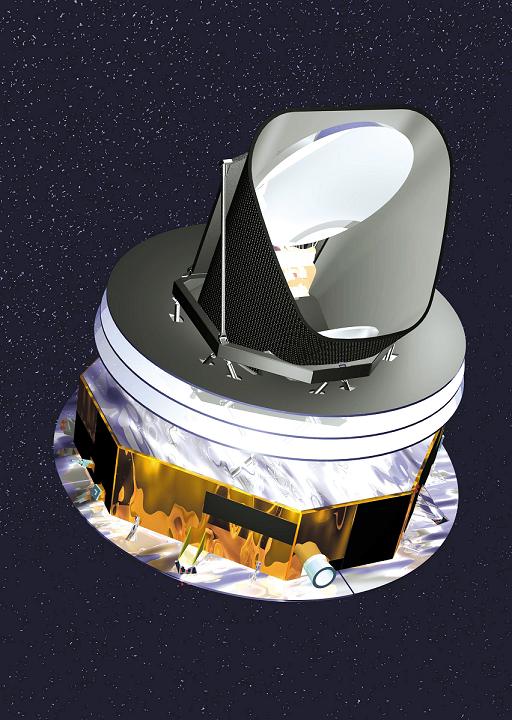The spacecraft will be located separately in the L-2 region, about 1.5 million km from Earth * Herschel will study the formation of stars while Planck will look back to the Big Bang. Herschel will look at specific points in the sky and Planck will look at the whole sky.

The European Space Agency's Herschel and Planck spacecraft were successfully launched on Thursday from the space center in Coro, French Guiana. The Ariane 5 launcher performed a smooth launch, when the missile took off exactly on its designated trajectory.
The two spacecraft separated from each other and moved in different directions from the upper stage of the launcher, four minutes apart. After spinning to position themselves in the spot intended for their highly elliptical orbits. About 40 minutes after launch, Herschel and Planck transmitted the first radio signals to Earth confirming that they were in good condition.
In a few months, the two spacecraft will dock at the L-2 Lagrange point, located about 1.5 million kilometers from the Earth, beyond the orbit of the Moon. By the beginning of 2010, they will begin their scientific activity aimed at opening new windows to the universe. Herschel will study star formation while Planck will look back to the Big Bang. Herschel will look at specific points in the sky and Planck will look at the whole sky.
The Herschel Space Telescope, named after the 18th century astronomer who discovered infrared light, is seven meters long and 4 meters in diameter. The diameter of the telescope mirror is 3.5 meters, 4 times larger than previous infrared telescopes. It will therefore be able to collect long-wavelength radiation from some of the coldest and most distant objects in the universe. The mirror itself is a technological marvel. It uses 12 "petals" made of silicon-carbide that are fused together into one unit. Herschel will be the only sky observatory covering a spectral range from the far infrared to the submillimeter.
To discover cold, dark objects, Herschel must be even colder. 2,400 liters of liquid helium cools the telescope very close to absolute zero. Just as a thermal camera can see the body heat of the subject, Herschel will look beyond dust and gas to look into star-forming regions, study comets and look into the distant universe to regions where galaxies have merged and resulted in star formation. The scientists plan to operate Herschel for at least three years.
Planck will observe the entire sky and map non-stop in order to create a picture of the universe as it was 13.7 billion years ago. The dimensions of the spacecraft are four by four meters, while the diameter of the main mirror is 1.5 meters and it is surrounded by bushes that will prevent stray light from nearby stars such as the Sun, the Earth and the Moon from interfering with the observation. Planck's detectors must also be cold to within a tenth of a degree above absolute zero.
The European Space Agency plans for 15 months of routine Planck observations. The mission may be extended depending on the state of the helium 3 isotopes used to cool the spacecraft. Planck will examine some of the most important questions in cosmology. Among other things, he will investigate the cosmic background radiation with the aim of finding out what were the main components of the universe in its early days and will try to look for evidence of the existence of gravitational waves. Planck will move backwards in time, giving us a better understanding of the future.
